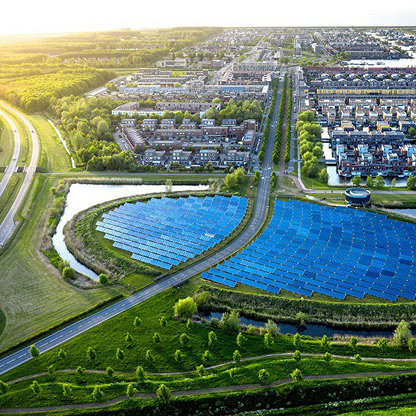COVID-19 has highlighted the importance of green spaces to mental wellbeing and physical health. Yet easy access to good quality green space is not always equal. How can green spaces be improved for the benefit of everyone?
Equality of green space
In England, the public was told to stay local during each lockdown so having a green space within easy reach was particularly important. However, local access to parks can vary. According to the London Sustainable Development Commission, only half of London’s population live within 400 metres of their nearest formally designated local open space, which is a public park of at least 2 hectares. Many households in areas of deficiency, however, do have access to smaller amenity green spaces, pocket parks or private gardens.
Linda Hwang is Senior Director of Strategy & Innovation at The Trust for Public Land. As she explains, a US study of 100 of the country’s largest cities found that residents in minority neighbourhoods had on average access to 44 percent less park space per person than predominantly white areas. The Trust’s study saw a similar disparity among low-income versus high-income neighbourhoods. “Such disparities reflect inequities going back to the early 1930s”, she explains. In Europe the picture is much more mixed, says Professor Mark J Nieuwenhuijsen from the Barcelona Institute for Global Health (ISGlobal). Richer people living in the centre of cities having less green space than those on the outskirts.
Measuring locality
The ‘3-30-300’ [1] rule is a proposed measure aiming to promote urban greening. It advocates that everyone should be able to see three trees from their home, have 30% tree canopy in their neighbourhood and be 300 metres from the nearest park or green space of at least 1 hectare. The 10-minute walk is an alternative metric used by The Trust for Public Land, whose online tool – ParkServe [2] - can measure residents’ locality to parks across nearly 14,000 cities, towns and communities in the US.
“Urban planning that incorporates WHO recommendations for green space could prevent up to 43,000 premature deaths each year.”
Health benefits
A recent study by ISGlobal [3] on 1,000 European cities estimated that more than 60% of people in European cities live in areas with insufficient green space. The World Health Organisation recommendations that green spaces of at least 0.5 hectares should be at a linear distance of no more than 300 metres from every home. Urban planning that incorporates this recommendation could prevent up to 43,000 premature deaths each year.
Cognitive function has also been shown to benefit from green space. As Professor Nieuwenhuijsen notes, “research conducted in Barcelona found primary school children who went to schools in areas where there was good green space had 5% to 6% better cognitive development than pupils who didn’t”. On the other side of the spectrum, green space can help prevent Alzheimer’s, he adds. One of the biggest health benefits of green space and savings to health services is better mental health. Active commuters, for instance, who use greener routes have been shown to have better mental health than those commuting through grey space.
Less asphalt, greener streets
Asphalt is popular because it is cheap and lasts a long time, but we are now seeing a culture shift. This is not only because of climate change, but also because of the benefits of green space in our streets. In Los Angeles, a rising trend in asphalting school playgrounds was countered through an initiative by The Trust for Public Land and the LA Living Schoolyards Coalition. The initiative saw asphalt playgrounds turned into green spaces with natural play structures. These play spaces were also opened to the public after school hours, helping to address the park equity gap and provide shading from urban heat. In the US, heat is the number one weather-related killer. Urban greening can help reduce fatalities, for example, by creating areas of green space and the planting of trees of the correct species in the right places.
Developers and green space
Georgina Dowling is Director and Head of Impact Assessment at CBRE in the UK. She explains that an agenda change is also taking place in the private sector, so the onus is no longer just on the public sector. An example is developers looking to better their biodiversity scores through rewilding.
“If we want developers to provide more publicly accessible community green space, it needs to be enshrined in local plans, so the loss of developable footprint can be priced into the acquisition”, says Georgina Dowling. Otherwise, affordable housing is the primary area of contribution that a developer will look at, while greenspace can be an afterthought.
Community engagement
Community engagement is important: parks need to be representative of and welcoming to everyone. Parks are great melting pots for communities, states Georgina Dowling. If you design in collaboration with groups, you give them a sense of permission to use that space. This is particularly so for teenage groups, who are often and unfairly seen as intimidating. “One of the interesting things we are seeing”, says Linda Hwang, “is cities drawing ideas directly from their communities on where investments should be made in the parks system. Talking to people about what interests them in their parks, letting them daydream a little and giving them an opportunity to co-design are powerful mechanisms for addressing access to quality parks”.



